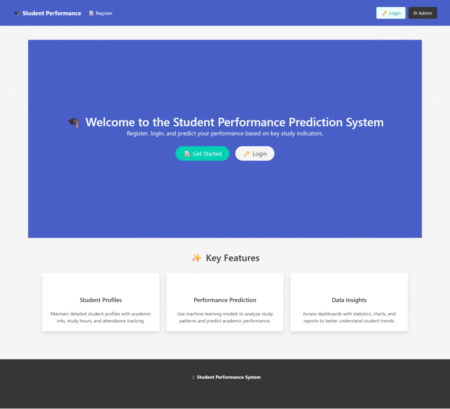IntroductionVisual testing is crucial for ensuring UI consistency across releases. While commercial tools exist, sometimes you need a custom solution tailored to your specific needs. This guide walks you through creating your own visual testing tool using Selenium and Python.Table of ContentsIntroductionWhy Build a Custom Visual Testing Tool?Core ComponentsImplementation GuideAdvanced FeaturesIntegration & ScalingReporting & AnalysisCommon Challenges & SolutionsLimitations & ConsiderationsConclusion & Next StepsWhy Build a Custom Solution?Specific requirements not met by commercial toolsCost savings for simple projectsComplete control over comparison logicLearning opportunity about image processingCore Components1. Screenshot Capture with Seleniumpythonfrom selenium import webdriver
import os
def capture_screenshot(url, filename):
“””Capture screenshot of a webpage”””
driver = webdriver.Chrome()
driver.get(url)
# Ensure screenshot directory exists
os.makedirs(“screenshots”, exist_ok=True)
screenshot_path = f”screenshots/{filename}”
driver.save_screenshot(screenshot_path)
driver.quit()
return screenshot_path2. Image Comparison Enginepythonfrom PIL import Image, ImageChops
import math
def compare_images(baseline_path, current_path, diff_path=None, threshold=0.95):
“””
Compare two images with similarity threshold
Returns: (is_similar, similarity_score)
“””
baseline = Image.open(baseline_path).convert(‘RGB’)
current = Image.open(current_path).convert(‘RGB’)
# Check dimensions
if baseline.size != current.size:
return False, 0
# Calculate difference
diff = ImageChops.difference(baseline, current)
diff_pixels = sum(
sum(1 for pixel in diff.getdata() if any(c > 0 for c in pixel))
)
total_pixels = baseline.size[0] * baseline.size[1]
similarity = 1 – (diff_pixels / total_pixels)
# Save diff image if needed
if diff_path and diff_pixels > 0:
diff.save(diff_path)
return similarity >= threshold, similarity3. Baseline Management Systempythonimport json
from datetime import datetime
class BaselineManager:
def __init__(self, baseline_dir=”baselines”):
self.baseline_dir = baseline_dir
os.makedirs(baseline_dir, exist_ok=True)
def save_baseline(self, name, image_path):
“””Save a new baseline with metadata”””
timestamp = datetime.now().isoformat()
baseline_path = f”{self.baseline_dir}/{name}.png”
metadata = {
“created”: timestamp,
“source”: image_path
}
# Save image
Image.open(image_path).save(baseline_path)
# Save metadata
with open(f”{baseline_dir}/{name}.json”, ‘w’) as f:
json.dump(metadata, f)
return baseline_pathAdvanced Features1. Region-Specific Comparisonpythondef compare_regions(baseline_path, current_path, regions, threshold=0.95):
“””
Compare specific regions of images
regions: List of (x, y, width, height) tuples
“””
baseline = Image.open(baseline_path)
current = Image.open(current_path)
results = []
for region in regions:
x, y, w, h = region
baseline_crop = baseline.crop((x, y, x+w, y+h))
current_crop = current.crop((x, y, x+w, y+h))
is_similar, score = compare_images(
baseline_crop, current_crop, threshold=threshold
)
results.append((region, is_similar, score))
return results2. Dynamic Content Maskingpythondef mask_dynamic_regions(image_path, regions, output_path=None):
“””
Mask dynamic content regions with black rectangles
“””
img = Image.open(image_path)
draw = ImageDraw.Draw(img)
for region in regions:
x, y, w, h = region
draw.rectangle((x, y, x+w, y+h), fill=’black’)
if output_path:
img.save(output_path)
return imgPutting It All Togetherpythondef run_visual_test(url, test_name, threshold=0.95):
“””Complete visual test workflow”””
# Setup
bm = BaselineManager()
current_path = capture_screenshot(url, f”current_{test_name}.png”)
# Check if baseline exists
baseline_path = f”baselines/{test_name}.png”
if not os.path.exists(baseline_path):
print(f”Creating new baseline for {test_name}”)
bm.save_baseline(test_name, current_path)
return True
# Compare images
diff_path = f”diffs/diff_{test_name}.png”
is_similar, score = compare_images(
baseline_path, current_path, diff_path, threshold
)
# Generate report
report = {
“test_name”: test_name,
“passed”: is_similar,
“similarity_score”: score,
“diff_image”: diff_path if not is_similar else None,
“timestamp”: datetime.now().isoformat()
}
return reportHandling Common ChallengesCross-Browser VariationsCreate separate baselines per browserAdjust similarity thresholds per browserResponsive TestingTest at multiple viewport sizesUse device emulation in SeleniumTest MaintenanceImplement baseline versioningAdd approval workflow for new baselinesPerformance OptimizationCache screenshotsParallelize testsIntegration with Test Frameworkspythonimport unittest
class VisualTestCase(unittest.TestCase):
@classmethod
def setUpClass(cls):
cls.bm = BaselineManager()
def test_homepage_layout(self):
report = run_visual_test(
“https://example.com”,
“homepage_desktop”,
threshold=0.98
)
self.assertTrue(report[‘passed’],
f”Visual regression detected. Similarity: {report[‘similarity_score’]}”)Reporting and Analysispythondef generate_html_report(test_reports):
“””Generate visual test HTML report”””
html = “””
<html><head><title>Visual Test Report</title></head>
<body><h1>Visual Test Results</h1>
<table border=”1″>
<tr>
<th>Test</th>
<th>Status</th>
<th>Similarity</th>
<th>Diff</th>
</tr>
“””
for report in test_reports:
status = “PASS” if report[‘passed’] else “FAIL”
color = “green” if report[‘passed’] else “red”
diff_link = f'<a href=”{report[“diff_image”]}”>View</a>’ if report[“diff_image”] else “None”
html += f”””
<tr>
<td>{report[‘test_name’]}</td>
<td style=”color:{color}”>{status}</td>
<td>{report[‘similarity_score’]:.2%}</td>
<td>{diff_link}</td>
</tr>
“””
html += “</table></body></html>”
return htmlScaling Your SolutionParallel ExecutionUse Selenium GridImplement multiprocessingBaseline ManagementStore baselines in cloud storageAdd metadata taggingCI/CD IntegrationAdd as a test step in your pipelineConfigure failure thresholdsLimitations to ConsiderMaintenance overhead for baseline updatesBrowser-specific rendering differencesPerformance impact of image processingLimited to pixel comparison (no semantic understanding)ConclusionBuilding a custom visual testing tool gives you flexibility but requires careful implementation. Start small with critical pages, then expand as needed. Consider these enhancements:Add machine learning for smarter diff detectionImplement cloud storage for baselinesCreate a dashboard for trend analysisAdd support for component-level testingRemember that commercial tools might become more cost-effective as your needs grow, but a custom solution can be perfect for specific requirements.
